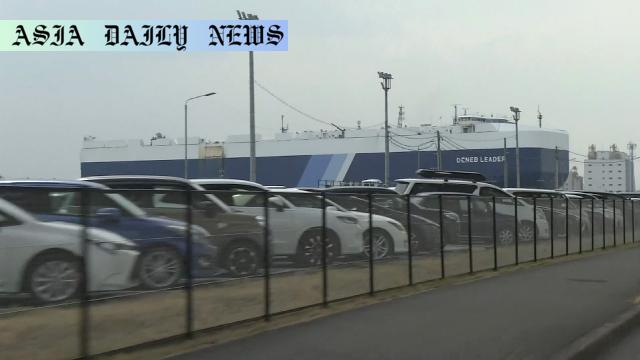Tariff: Japanese trade minister calls for swift US action to implement agreement to reduce tariff rates by the looming deadline.
Japan and the US recently reached an agreement to lower a planned 25% tariff on Japanese goods to 15%.
With Friday’s deadline fast approaching, Japan presses the US to expedite required executive orders.
The Japanese government is assessing the impact of tariffs on industries and the job market.

Background and Importance of the Japan-US Tariff Agreement
In an increasingly interconnected global economy, tariff agreements between major trading nations like Japan and the United States draw considerable attention. Earlier this month, an agreement was reached between the two nations to reduce the US’s planned 25% tariffs on Japanese imports to 15%. This significant development is critical for improving bilateral trade relationships, strengthening economic ties, and promoting industrial growth for both nations.
Notably, this tariff reduction may positively affect Japanese automobile manufacturers, as the agreed levy drops the rate from the initial plan of 27.5% to 15%. However, implementation remains contingent upon swift administrative action by the US government before Friday’s deadline. The Japanese Ministry of Trade and Industry, led by Muto Yoji, has emphasized urgency, recommending that early executive orders be executed to prevent further delays.
The Economic Implications of Tariff Adjustments
Tariff agreements play a pivotal role in shaping economic dynamics between nations. For Japan, industries such as automobile manufacturing account for a substantial portion of foreign trade earnings, and high tariffs threaten market competitiveness. The new agreement, once implemented, is projected to facilitate rapid growth in exports to the US, stimulate industrial activity, and safeguard thousands of jobs.
Additionally, the tariff reduction could stabilize prices for American consumers, fostering demand for high-quality Japanese manufacturers’ products. Despite these advantages, it is critical to closely monitor the ramifications for domestic industries in both nations. Japan’s move to evaluate potential repercussions on its industries and job market signifies a proactive and adaptive approach to trade policy.
Challenges to Implementation and Recommendations
As the deadline looms, the success of the agreement’s implementation hinges on how efficiently both governments finalize the necessary legal and executive measures. The US administration’s process of issuing executive orders to adjust tariff rates is often complex and time-sensitive. Failure to meet the deadline could potentially increase tensions and undermine the progress made between the two nations.
For stakeholders, such as industry representatives, exporters, and policymakers, constructive collaboration and effective communication are vital to ensuring the agreement is upheld. Furthermore, the US and Japan must actively strengthen their diplomatic engagements to resolve any outstanding procedural bottlenecks.
Conclusion: A Path Towards Stronger Trade Relations
The tariff reduction between Japan and the US marks a step forward in fostering robust and equitable trade relationships. It signals a shared commitment towards economic cooperation and mutual growth. If executed effectively, this agreement has the potential to alleviate trade tensions, enhance bilateral relations, and benefit consumers and industries in both countries.



Commentary
The Global Context of Tariff Negotiations
Trade agreements and tariff policies remain at the heart of global economic diplomacy. The recent tariff reduction agreement between Japan and the United States is a testament to the evolving priorities of mutual trade partners. These agreements not only highlight the importance of fostering competitive trade markets but also the delicate balance of ensuring that domestic economies continue to thrive while committing to global partnerships. The recently announced changes to tariff rates provide an optimistic outlook for improving both regional and global trade stability.
Economic and Industrial Ramifications
With Japan’s automobile exports being a cornerstone of its economy, the reduction of US tariffs from the initially planned 27.5% to 15% creates economic breathing room. For American consumers, this change could signify access to competitively priced, high-quality vehicles. However, broader implications also come into play, including whether this adjustment will ripple into increased market share for Japanese manufacturers within the US at the expense of their domestic counterparts.
While positive outcomes are expected in terms of trade volume and economic performance, I also believe it is prudent for policymakers in Japan to continue preparing for potential adversities. The proactive stance of Japan’s Ministry of Trade in mitigating risks demonstrates calculated economic foresight that other nations might emulate.
Moving Beyond the Deal: A Stronger Partnership
The trust and cooperation displayed during the negotiation and implementation of this agreement signal a hopeful trajectory for Japan-US relations overall. Agreements like these showcase what nations can achieve with mutual respect and a vested interest in building stronger partnerships. If the two nations successfully meet the Friday deadline, it may pave the way for future trade agreements in various sectors.